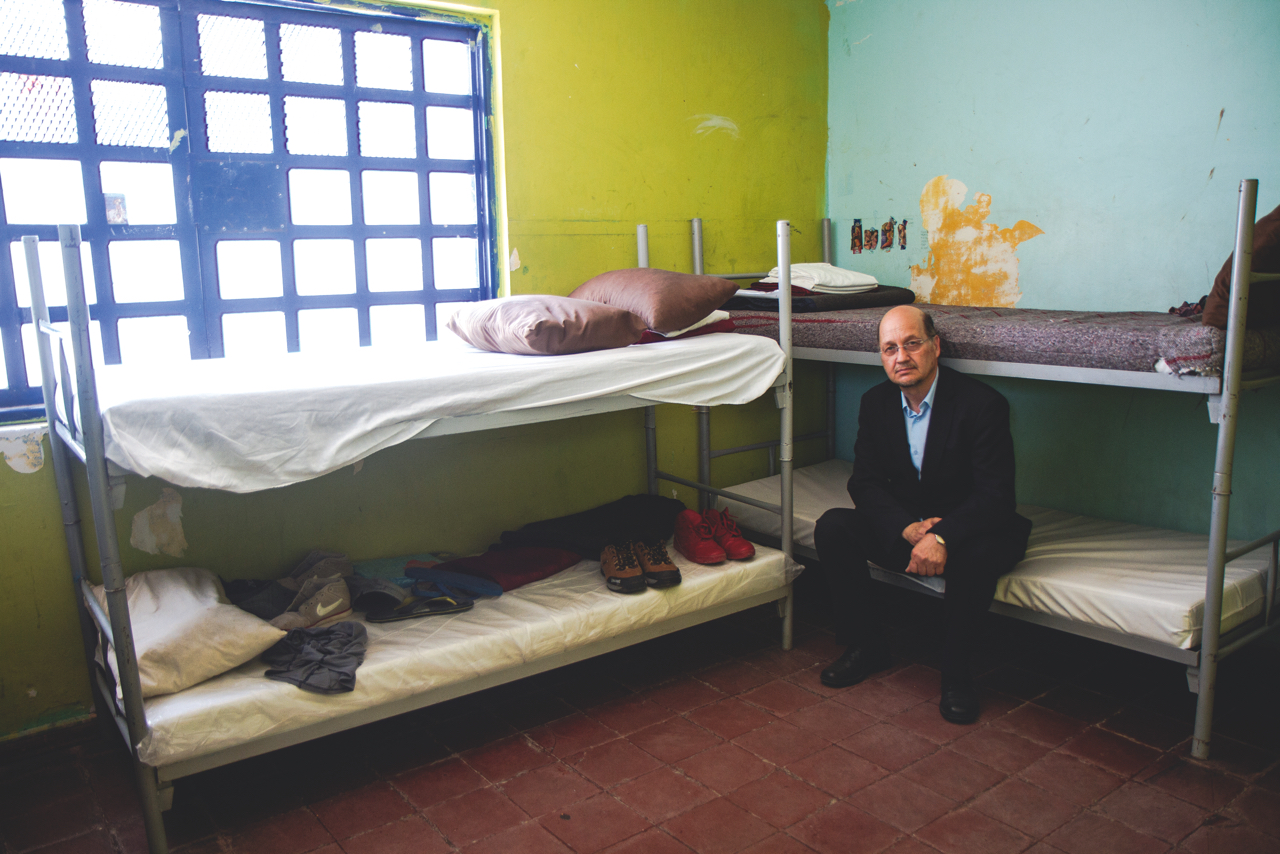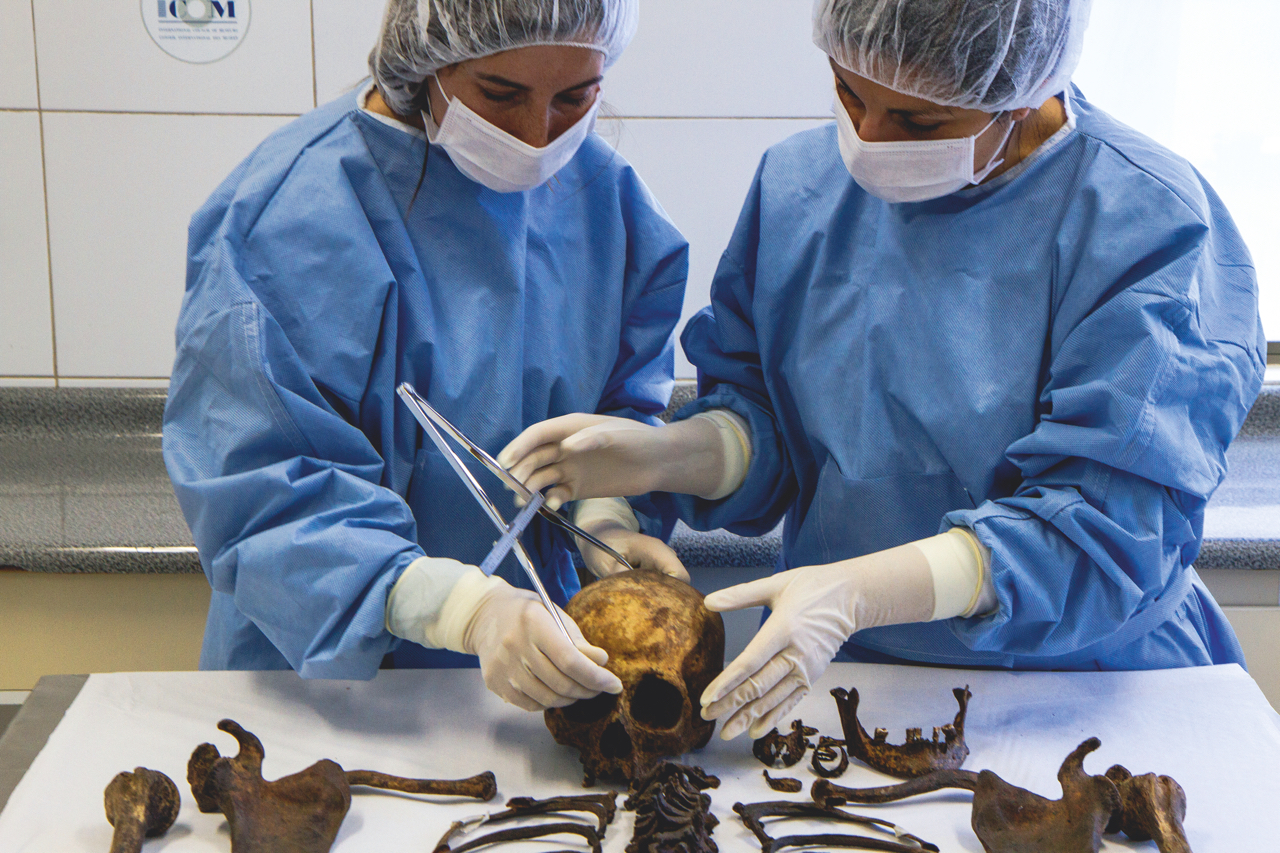Mistaken identities
Moreno’s identification was performed by the Legal Medical Service (SML in Spanish), Chile’s national coroner’s office, the agency Patricio Bustos now heads. The SML is gaining a reputation as an agency that can serve as a model to similar agencies during or after both conflict and natural disasters. But it wasn’t always that way.
Only a few years earlier, before Bustos became director, the SML had misidentified dozens of people who had disappeared after Pinochet and the military took power. The episode is remembered as ‘Patio 29’, a reference to an area in the general cemetery where the victims were buried. Between 1994 and 2002, the SML claimed to have identified 98 bodies from Patio 29 and delivered the remains to the families for proper burial. But in dozens of cases, the SML later said that the identifications were mistaken.
Relatives of the 1,200 victims whose remains had not been positively identified were especially outraged. “We lost confidence in the SML,” says Alicia Lira, who heads a group that represents relatives of people executed by the military regime and whose remains have still not been found.
When the SML’s director at the time resigned, Bustos, who held a senior post in the health ministry, applied for and got the job. Bustos immediately made changes. On his second day, he met with several relatives of Los Desaparecidos and told them that he would establish stricter rules to end misidentifications, be accessible to them and ensure that his agency treated the families in a more humanitarian way.
Answers in blood
The effort to rebuild the families’ trust continued in 2007, when the Chilean government created a DNA-sampling centre that enabled forensic scientists to match DNA from found bones with the living relatives of the disappeared. The agency also signed agreements with foreign accredited, genetic-analysis laboratories and began working more closely with the ICRC, which has significant expertise in the identification of human remains.
Two years later, the SML launched its first public campaign inviting family members of the disappeared to donate blood to see if their DNA matched unidentified remains that had already been found or that might be discovered. The SML collected more than 3,500 samples.
Collecting blood is a simple task. But for many family members, the process awakens painful memories. “When a family member gives a sample, they inevitably get emotional, because they feel there is the possibility of finding your loved one some day,” says Lorena Pizarro, representative of the Families of Disappeared Detainees Association.
Last year, the SML went a step further with a new programme, called ‘A drop of your blood for truth and justice’, which aimed to reach out beyond relatives of Los Desaparecidos to others who think their family may also have been a victim of the regime.
Since 2007, the SML has definitively identified 138 remains — meaning 138 families now have a place to visit their loved ones. Of those, 58 were among those that had been previously misidentified.
Despite the successes, many challenges remain. While Bustos says the SML still has work to do in gaining the trust of those who lost loved ones, the problem has not been getting the relatives to provide blood samples. The problem has been finding the remains of Los Desaparecidos.
According to records revealed during various investigations into the regime, the military and the secret police took deliberate steps to hide the remains. In one notorious operation, code-named ‘Throw out television sets’, the military dug up and moved remains in order to hide the evidence. Some of these ‘television sets’ were dug up from secret gravesites, loaded onto military aircraft and dropped into the sea.
But when remains do appear, the blood samples from relatives greatly increase the chances of a definitive match. Using DNA can be important, says Olga Barragán, forensic adviser in the ICRC Brasilia Regional Delegation, covering Argentina, Brazil, Chile, Paraguay and Uruguay. But DNA is only part of the overall puzzle.
“You try to get as much information as you can from the families,” Barragán adds. “The colour of the eyes, the skin, the sex, the weight and height, dental records, any surgeries, implants or x-rays. The region has made big advances in forensic science in recent years, not only because the technology is better but also because forensic workers are better prepared, with a holistic humanitarian vision. So, they are getting better results.”
The ICRC’s forensic work in Chile is not limited to the disappeared, however. It also assisted the SML following an earthquake in 2010 that killed more than 500 people and a prison fire, also in 2010, that killed 81 inmates.
And in two other high-profile cases, the ICRC was brought in as a neutral observer after Chilean judicial authorities ordered the exhumations of Chilean poet Pablo Neruda and former Chilean president Salvador Allende in order to definitively determine the cause of their deaths. The ICRC role in the Neruda exhumation, conducted by the Chilean forensic service with help from other Chilean and international experts, was to help ensure that the exhumation followed international standards and that the rights of family members were respected during the process.
From note cards to DN A samples
Late last year, the ICRC’s role took on a new dimension when it became one of four institutions to permanently store DNA samples of Chile’s disappeared in its archives in Geneva, Switzerland. “This is the first time the ICRC has received DNA samples for future use, for the identification of human remains strictly for humanitarian purposes,” says Morris Tidball-Binz, director of the ICRC forensic services unit based in Geneva.
Since the First World War, the ICRC has relied on personal information to reconnect family members separated by conflict. A hundred years ago, it was collected on note cards and stored in warehouses filled with filing cabinets. Later, it was secured on computer networks. The storage of DNA samples is unprecedented.
For Pizarro, this arrangement with an international organization shows that families of Chile’s disappeared are “not alone”, and that finding answers is a global responsibility. “The hope is that, even if hundreds of years go by, we will have a place to return to, in order to identify our loved ones,” she says.
The Tower
For Bustos, the drive to find answers on behalf of the disappeared has been deepened by his own personal experience. It began on 10 September 1975. Bustos says had just left his place of work in Santiago when three agents grabbed him, forced him up against a wall, handcuffed, gagged and blindfolded him and then hustled him into a waiting car. They beat Bustos for 30 minutes until they reached their destination: Villa Grimaldi, the secret police’s main torture centre.
The secret police had been hunting for Bustos for months and had almost caught him several times as he constantly kept on the move, using any one of eight aliases.
At the time of the coup, Bustos says he had been the president of the medical students’ centre at the University of Concepción, a hotbed of leftist political activity. After the coup, the military government expelled him from the university. He went to Santiago to join the underground resistance movement and soon headed a mobile medical team that treated people who were also in hiding.
At Villa Grimaldi, Bustos says he was stripped, placed upon the metal coils of a bed known as La Parilla (the grill). There, he was interrogated and given electric shocks.
He was then dragged to a narrow, 40-metre tall building known as The Tower. There, his wrists and ankles were bound while his arms were looped under a horizontal metal bar that was thrust behind his knees; his head inclined downward. For hours, he was held in this excruciating position, known as the Parrot’s Perch.
Over the next two months, Bustos says he was placed repeatedly on the Parrot’s Perch and on la parrilla, sometimes alongside his wife, who had been a dentist and was also in the underground opposition until her arrest.
In November 1975, Bustos was transferred to Cuatro Alamos, where the secret police often took political prisoners to recover from torture before deciding their ultimate fate. There he met José Zalaquett, a human rights lawyer who had also been arrested. “His chances of surviving were very poor,” Zalaquett recalls, given Bustos’ importance to the resistance movement and thus perceived danger to the military regime.
 Red Cross Red Crescent magazine
Red Cross Red Crescent magazine 






